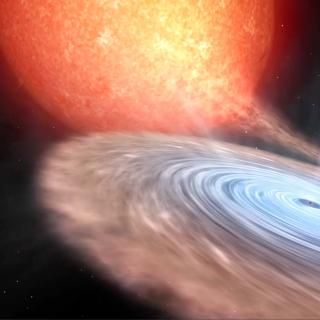Bibcode
Muñoz-Darias, Teo; Ponti, Gabriele
Bibliographical reference
Astronomy and Astrophysics
Advertised on:
8
2022
Journal
Citations
22
Refereed citations
20
Description
Observational signatures of accretion disc winds have been found in a significant number of low-mass X-ray binaries at either X-ray or optical wavelengths. The 2015 outburst of the black hole transient V404 Cygni provided a unique opportunity for studying both types of outflows in the same system. We used contemporaneous X-ray (Chandra Observatory) and optical (Gran Telescopio Canarias, GTC) spectroscopy, in addition to hard X-ray light curves (INTEGRAL). We show that the kinetic properties of the wind, as derived from P-Cyg profiles detected in the optical range at low hard X-ray fluxes and in a number of X-ray transitions during luminous flares, are remarkably similar. Furthermore, strictly simultaneous data taken at intermediate hard X-ray fluxes show consistent emission line properties between the optical and the X-ray emission lines, which most likely arise in the same accretion disc wind. We discuss several scenarios to explain the properties of the wind, favouring the presence of a dynamic, multi-phase outflow during the entire outburst of the system. This study, together with the growing number of wind detections with fairly similar characteristic velocities at different wavelengths, suggest that wind-type X-ray binary outflows might be predominantly multi-phase in nature.
Related projects

Black holes, neutron stars, white dwarfs and their local environment
Accreting black-holes and neutron stars in X-ray binaries provide an ideal laboratory for exploring the physics of compact objects, yielding not only confirmation of the existence of stellar mass black holes via dynamical mass measurements, but also the best opportunity for probing high-gravity environments and the physics of accretion; the most
Montserrat
Armas Padilla